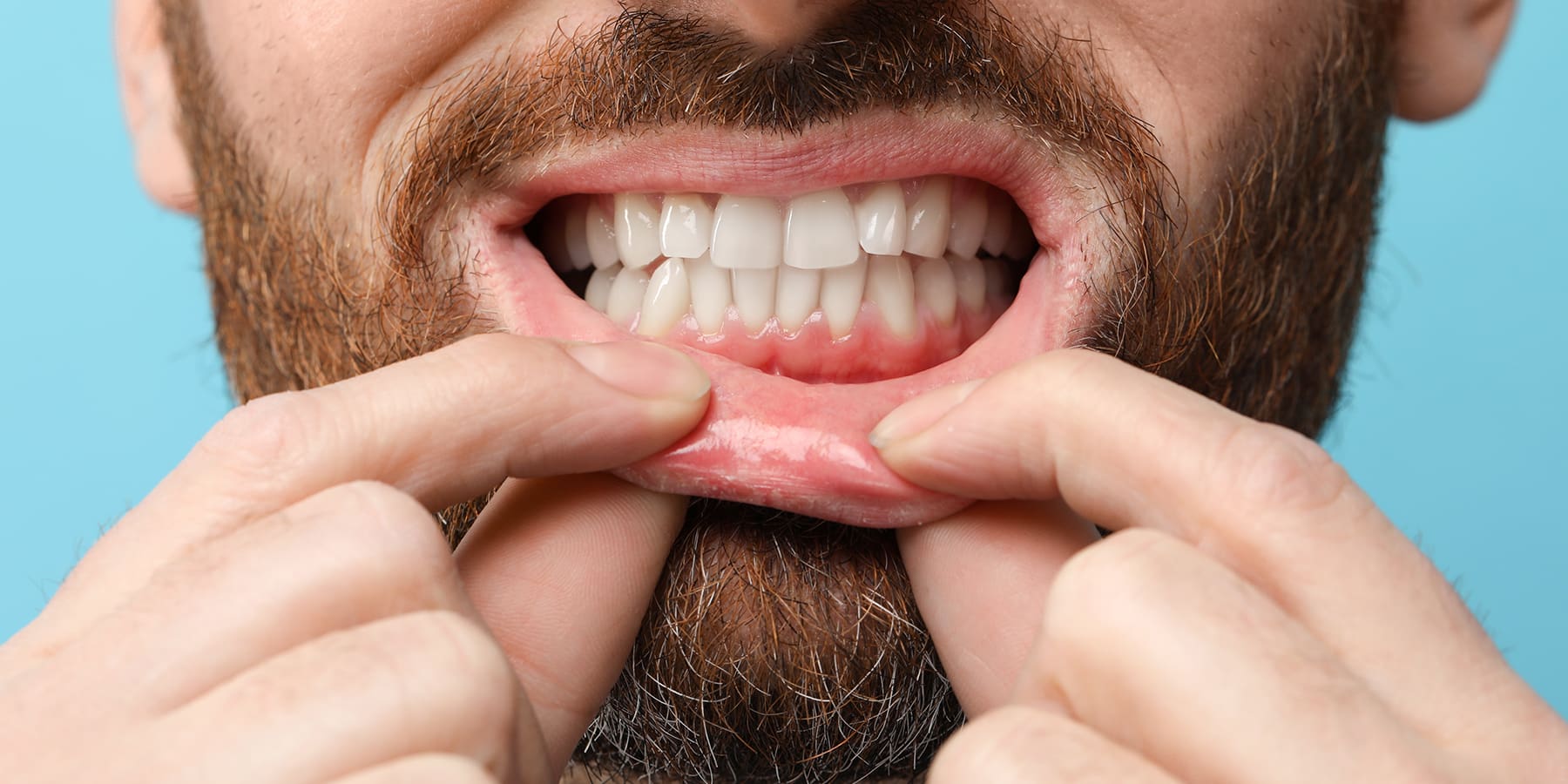Reviewed By Dr. Robert Barron, DMD
Reading Time: 3 minutes
After a dental procedure, you notice a rough patch or sharp bump near your gums. It feels like something hard is poking through—and it probably is. That small fragment could be an oral bone spur.
Bone spurs, also known as bone spicules, sometimes work themselves out naturally, but not always. In this blog, you learn what causes them, what to expect during healing, and when it is time to get professional help.
Table of Contents
Key Takeaway
Some oral bone spurs heal on their own as the gums recover, but if a sharp spot causes discomfort or lingers too long, it’s worth having it checked. A quick follow-up can prevent complications and keep your healing on track.
What Is an Oral Bone Spur?
An oral bone spur is a small, hard fragment of bone that may appear after a dental procedure, such as a tooth extraction. These tiny bone pieces sometimes work their way through the gum tissue during the healing process.
Bone spurs are a natural by-product of your body’s natural healing process. After a tooth extraction or other oral surgery, your bone reshapes and remodels. Sometimes small fragments of bone break loose or do not fully reabsorb. As your gum tissue heals, these bone chips or pieces of bone can emerge.
Will They Go Away on Their Own?
In many cases, yes. Small dental bone spurs often work their way out naturally as your gum tissue heals. You may notice a sharp bone or rough spot in your mouth that gradually becomes smoother or disappears during the healing phase.
However, some bone spurs may require professional care if they:
- Cause ongoing discomfort or persistent pain
- Become infected, leading to gum infections
- Do not resolve after several weeks
- Interfere with dentures or other dental appliances
If you experience these symptoms, contact an oral surgeon for a proper diagnosis and evaluation.
How to Dissolve Bone Spurs Naturally
You cannot exactly “dissolve” a bone spur on your own, but you can support your body’s natural process for proper healing:
- Maintain good oral hygiene: Keep the area clean with gentle brushing and rinsing.
- Use warm salt water rinses: A warm saltwater rinse helps soothe the soft tissue and promotes healing.
- Apply an ice pack: This helps reduce swelling during the initial healing process.
- Use over-the-counter pain relievers: OTC pain medication can help manage discomfort.
- Avoid disturbing the area: Do not pick at the bone spur with your tongue or fingers.
- Eat soft foods: This prevents additional irritation to the gum tissue and healing bone.
Over time, the gum tissue may cover the spur, or the spur may come out on its own.
When to Follow Up
If a bone spicule causes pain, irritation, or does not improve after a few weeks, follow up with the dentist or oral surgeon who performed the procedure. They can check the area, confirm whether it’s a bone spur, and decide if any treatment is needed.
In some cases, a quick procedure to smooth or remove the bone helps relieve discomfort and support proper healing. If your original provider recommends further care or you prefer to have the area evaluated by a surgical specialist, our team at Concord Oral Surgery is here to help.
Schedule a Consultation at Concord Oral Surgery
If you are concerned about bone fragments, bone spicules, or have questions after oral surgery, we encourage you to schedule a consultation with our experienced oral surgeon.
To book an appointment at our oral surgery office in Vaughan, ON, call (905) 669-2616. We are located at 3300 Highway 7 West, Suite 805 Vaughan, ON.
To learn more about how we help patients restore and protect their oral health, explore the full range of surgical services we provide at Concord Oral Surgery.

